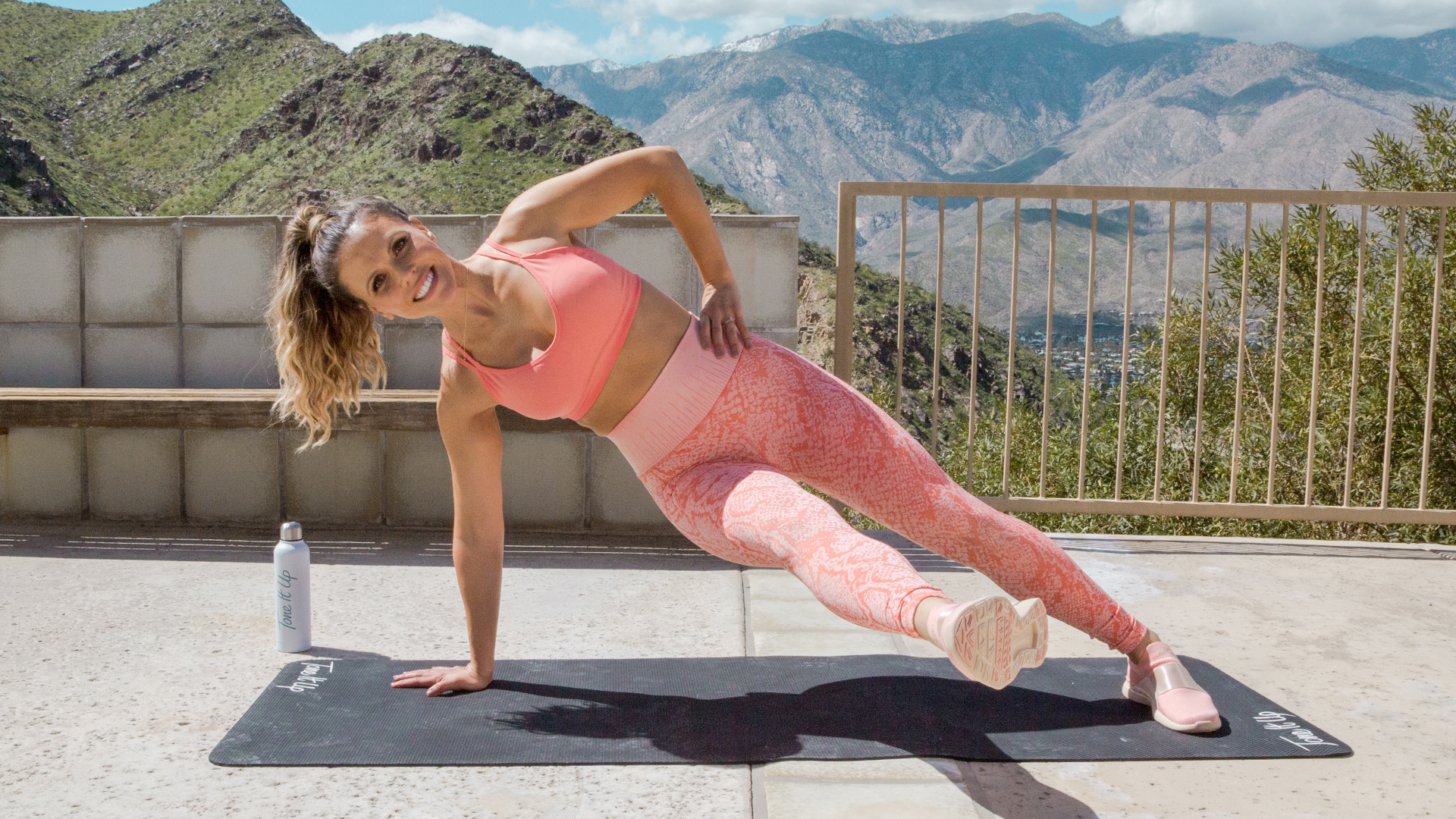
6 Weight Training Techniques Trainers Use For The Best Results
By Katrina Scott on
6 Strength Training Techniques For Amazing Results
Supersets
How to do them: For this super-effective technique, you’ll pick two exercises and alternate between them with no rest in between. You can choose two moves that work the same muscle group (think: squats and walking lunges), or two moves that work different muscle groups. For example, a back-sculpting bent-over row with a chest-toning bench incline push-up. How they work: By eliminating the rest period, supersets allow you to increase the intensity of your workout and do more work in less time. And, if you stick to a single muscle group with your supersets, you’ll effectively overload that muscle group, allowing you to increase strength AND muscular endurance!Drop Sets
How to do them: Start out with a heavy set of weights and as you start to fatigue, drop down to a set of lighter weights to complete your reps. How they work: Using this high-intensity training method, you fatigue one group of muscle fibers with your heavy weights. Then by going lighter, you recruit a second group of muscle fibers that you weren’t working earlier. The more muscle fibers you recruit, the more beautiful lean muscle your body is able to form.Negative Sets
How to do them: Also known as eccentric sets, negatives have you slowwww down the lowering phase of a lift to really make it burn. Using a bicep curl as an example, you’ll lift the dumbbell or barbell up on a count of 1, then slowly lower it for a count of 3-5 seconds. How they work: While it’s easy to think of the lifting (concentric) phase of an exercise as the hard part, the magic actually happens during the lowering (eccentric) phase. That’s when your muscle fibers are most challenged and fatigued. They endure more damage too, meaning this is when they have the greatest opportunity for growth. Hellllooo strength gains!Isometric Holds
How to do them: Stay strong and steady! Isometric moves are done in a static position, rather than moving through a range of motion. A few of our faves: wall sits, planks, and glute bridges! How they work: An isometric contraction happens when your muscle tenses while not changing length. Translation: your muscle is flexed, but doesn’t expand or compress. While a well-rounded routine includes dynamic moves too, isometrics are an amazing way to strengthen a specific muscle group without any impact ~ or equipment!
Training to Failure
How to do it: You guessed it...training to failure means doing as many reps as you can, until you physically can’t do one more! This advanced training technique can be applied to a variety of exercises (bicep curls, bent-over rows, push-ups, and so on). Just remember that going to failure doesn’t mean giving up on good form! How it works: The concept of concentric failure means overloading the muscle with a stress it’s never experienced before, forcing it to break down and grow stronger than ever. Those longer sets make a difference too. When you push yourself to go longer and harder, your body recruits more muscle fibers and secretes more muscle-building hormones than you would if you were to cut your sets short. That’s why this method has been found to work well for experienced lifters looking to push past a fitness plateau.
Tabata
How to do it: Go hard for 20 seconds, rest 10 seconds, repeat 8 times! Sounds like a breeze? Trust us, this form of HIIT is TOUGH! (Head to your Tone It Up app to try Kat’s Tabata Tone workout in On Demand!) Traditionally, all 8 rounds will be just one exercise ~ yup, that’s a whole lot of jump squats or whatever move you choose. Or, you can mix things up alternating between two heart-pumping moves. The good news: It’s all over in just 4 minutes! How it works: Intensity is the secret to success here. Like all forms of HIIT, Tabata gets your heart rate up fast and burns more energy in less time. And thanks to excess post-exercise oxygen consumption (EPOC), aka the after-burn effect, you’ll keep burnin’ it up long after you leave your mat.











 For women, by women
For women, by women
 Share. Love. Inspire. Sweat.
Share. Love. Inspire. Sweat.
 Live Your Healthiest, Happiest Life
Live Your Healthiest, Happiest Life